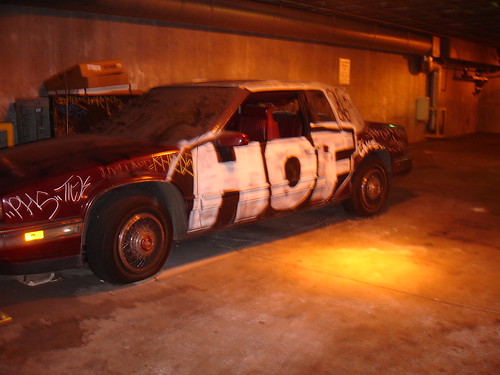Details, Details, Details: A quick comparision of the House vs. Senate forms of “Cash for Clunkers” a.k.a Consumer Assistance to Recycle and Save (CARS Act) bill
(Source: Associated Press, The Detroit News, Streetsblog & Jalopnik)
With the “Cash for Clunkers” bill successfully clearing the House floor, there is a lot of chatter about the fate of this bill in the Senate. The auto industry and Michigan lawmakers are pushing for quick Senate action on this legislation to boost auto sales, after the House overwhelmingly passed the bill Tuesday.

But it remains unclear when Senate supporters may overcome the objections of Senate appropriators and a group of senators who say the House proposal doesn’t do enough to improve fuel efficiency on the nation’s highways.
The House approved its version Tuesday, 298-199, with substantial Republican support despite the opposition of House leaders including Minority Leader John Boehner and whip Eric Cantor.
Sens. Debbie Stabenow, D-Lansing, and Sam Brownback, R-Kan., introduced a nearly identical bill in the Senate, but had to withdraw an attempt to get a floor vote last week.
Opposition came from members of the Senate Appropriations Committee, which objected to funding provisions of the bill, and from senators who want tougher fuel economy requirements.
Sen. Diane Feinstein, D-Calif., introduced a competing proposal on Monday. Feinstein’s proposal would require drivers to achieve a 25 percent fuel-efficiency increase before receiving a tax credit for ditching their clunkers. But Michigan Sen. Debbie Stabenow (D) is pushing for a trade-in tax credit that’s very similar to Sutton’s — truck owners would only have to increase their fuel efficiency by 2 miles per gallon to be eligible. The requirements for car trade-ins aren’t much better under the Stabenow and Sutton plans, with a mere4 mpg increase in fuel economy triggering the $3,500 tax credit. With Rep. Sutton’s plan winning the House approval this week, Stabenow’s Senate counterpart could potentially get a leg up over Feinstein’s.
While we await the Senate action, I put together a quick side by side comparision of the two bills (data from Associated Press).

Data Courtesy: Associated Press
Also, our friends at Jalopnik have compiled an awesome visual that simplifies the rs details of this “Cash for Clunkealong” with some great analysis about the worthiness of the program for buyers.
First of all, operable vehicles are required and there aren’t many people driving around with vehicles worth less than $1,500. Many old crappy cars, in fact, can still demand up to $2,500 on the open market. This means you’re going to get, max, $2000 for your trade-in. The least valuable qualifying cars, of course, are actually the more efficient compact vehicles, which makes getting the necessary 10 MPG improvement unlikely.
The second problem, stemming from the first, is quantifying the number of people who actually drive around in cars worth less than $2,500 and can actually afford a new car. Our instinct tells us there aren’t many people. This means people taking advantage of the program will, typically, have to be excited by the prospect of saving $1,000 or $2,000. These people should already have been swayed by intense discounting from automakers in recent months.
Click here to read the entire article.










